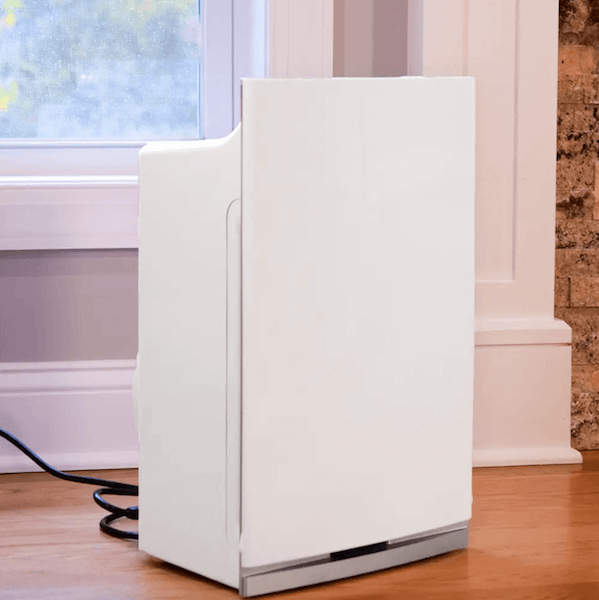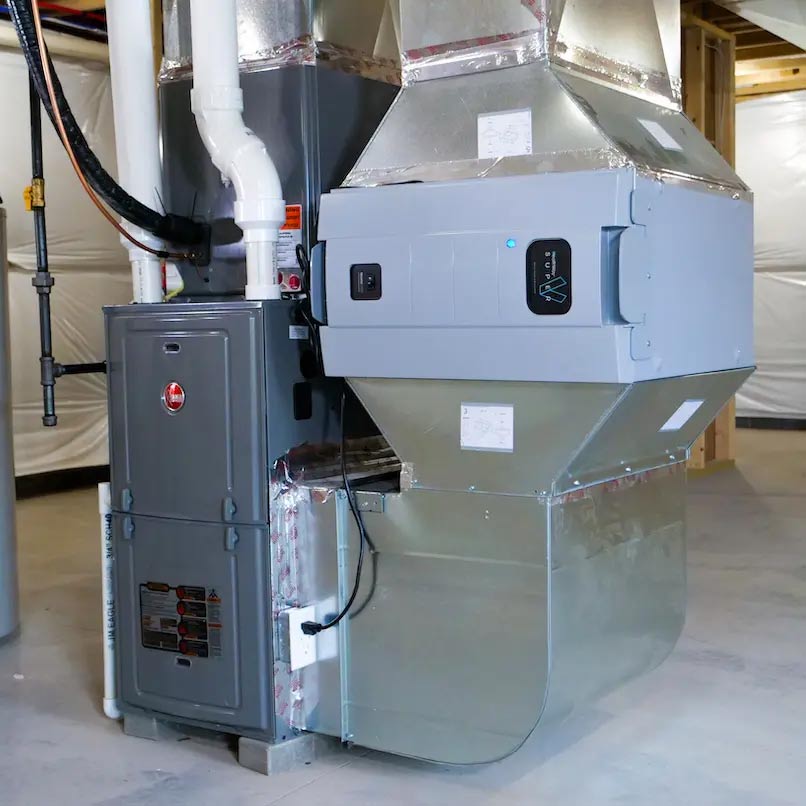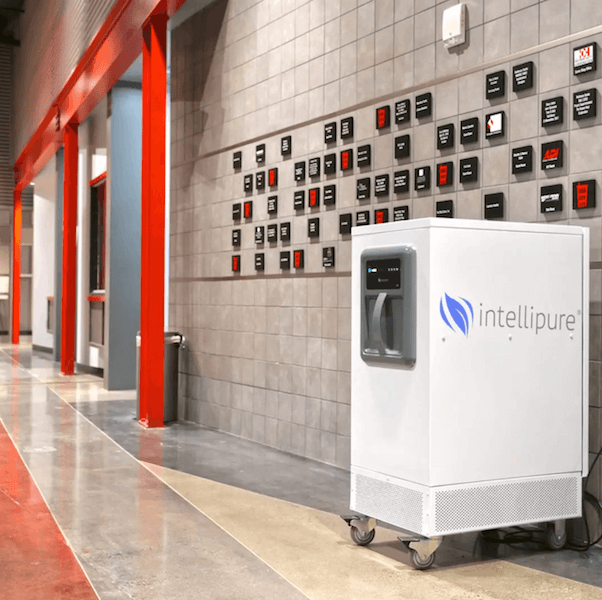Everyone loves and wants clean air. We might not frequently consider exactly what’s hidden in the air we breathe in all day long, but that doesn’t mean it’s not important. Safe, clean air is one of the top aspects of healthy living! That’s why it’s important to actively work on improving our indoor environment by doing things such as outfitting our homes with the best air purifiers available.
Have You Considered Your Air?
We often hear about the importance of clean air in nature, but the air in our homes is just as crucial to maintain.

Think about it. On average, we take about 20,000 breaths a day. Now consider where you take the majority of those breaths. Chances are that between sleeping, binge-watching Cobra Kai and The Witcher on Netflix, and eating dinner with the family, many of those inhalations are completed right within the comfort of your own home.
They’re our safe spaces away from the world! Or, at least, they should be. With the way homes are constructed nowadays, maintaining clean air can be a bit of a task. To be energy-efficient, homes are now built tighter, which inhibits airflow between inside and outside of the building. Less airflow means all of those little particles, whether they’re dust, viruses, mold spores, or toxins, remain trapped within the walls of your home.
To make matters worse, indoor contaminants like mold aren’t always given the attention they deserve either. This lack of awareness can result in the entire building becoming a particle-filled party.
Until these current standards and mentalities are changed, it’s up to us to help ensure that our indoor air is clean. A fantastic way to accomplish this is to invest in the best air purifiers that will work their magic in filtering out all of those tiny particles.
The Makings Of The Best Air Purifiers
There’s one key distinction that separates the best air purifiers from the not quite as great purifiers, and that is their filtering ability. The right fit for your home will filter out those teeny-tiny microscopic particles that are floating all throughout the indoor air. You might not be able to see them, but that doesn’t mean that they’re not affecting your health.
Take mold, for example. When mold begins to grow within your home, it will immediately start releasing microscopic spores.¹’²
It’s similar to how a dandelion puff releases those fluffy white seeds into the air. Except, in this case, all of these little seed-like spores are trapped within the walls of your home and you’d never know it because they’re invisible to the naked eye. Think of a snow globe and you’ve got the right idea. Some mold species also release microscopic toxins called mycotoxins when they feel threatened, which is just a double whammy for indoor air quality.³
The issue with particle-filled air is that many of these tiny specks are so small that they can slip right into your body while you’re breathing and start causing mayhem in your body. That’s why the EPA considers them pollutants and categorizes them based on their size.

How Small Is Small When Looking For The Best Air Purifiers?
The EPA termed these small particles particulate matter and breaks them down into two categories, both of which are inhalable:⁴
- PM10: particles that have a diameter of around 10 micrometers or less.
- PM2.5: fine particles that have a diameter of around 2.5 micrometers or less.
A micrometer, or micron, is one-millionth of a meter. Those tiny lines on a ruler? You’d have to line up 1,000 microns to equal a single one of those millimeters. The kicker is that the human eye can only see particles that are larger than 40 microns on average. A strand of human hair, for example, is around 70 microns, and many of us have to squint to see that. No judgment here!
That makes particles like mold spores, bacteria, viruses, and toxins a real pain when it comes to maintaining healthy indoor air quality. Mold spores, for instance, are around 1-20 microns, and mycotoxins are around 0.1 microns.
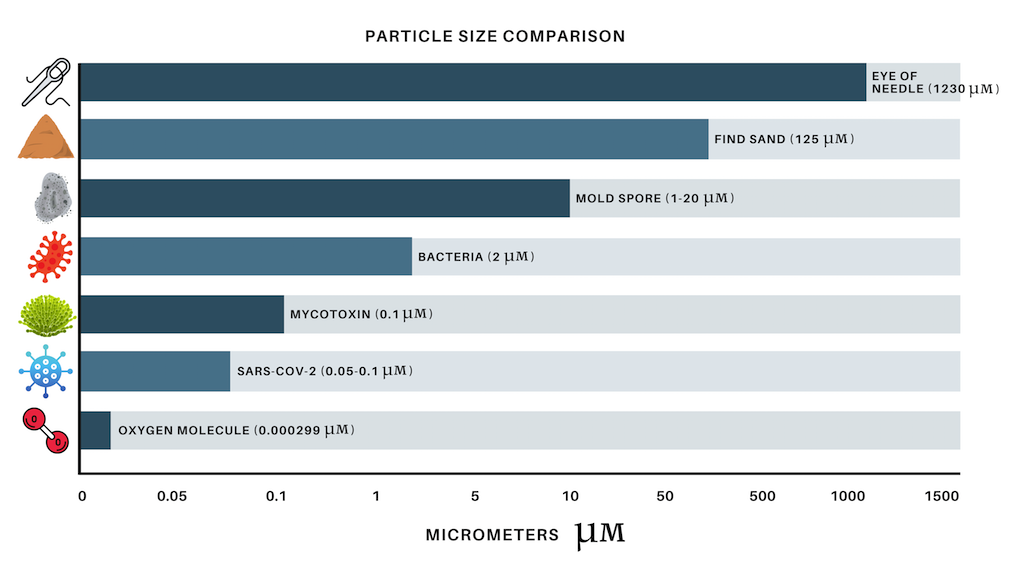
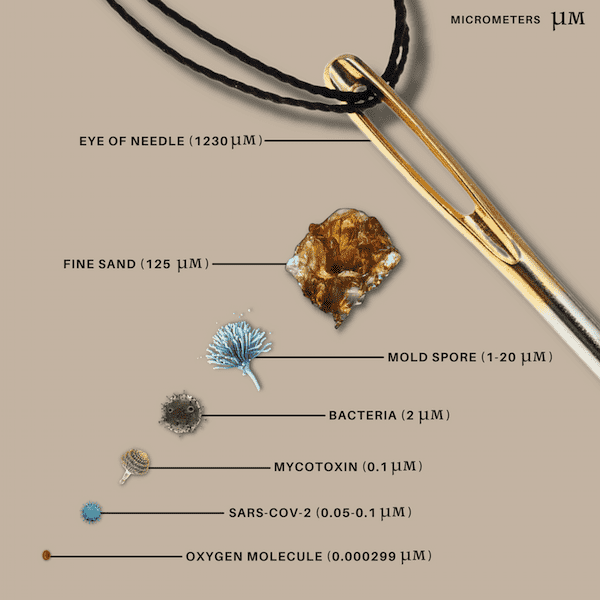
Go With The Best Air Purifiers- It’s For Your Health!
The main point of removing these contaminants from the air is to prevent a massive number of them from making their way into our bodies in a short period of time. Their ability to filter out viruses is a massive perk as well but viruses and bacteria aren’t the only things we have to worry about. Even though they’re probably the first thing that comes to mind when thinking about creating cleaner indoor air.
As we’ve been told throughout the years, particle pollution is no joke. Particles in our indoor air may not be discussed nearly as much as viruses like COVID-19, but they’re just as important to remove.
Take mold as an example. A few mold spores or toxins encountered throughout the day are unavoidable and typically not a problem. When you’re breathing in a massive amount while you’re relaxing and unwinding for the day, that’s a bit of an issue. The immune system will do its best to remove as many of them as possible from your body, but it’s not perfect. Eventually, it will get bogged down, be unable to keep up, and/or malfunction and cause autoimmune issues.
Researchers are still trying to figure out exactly how mold exposure affects health, but with over 100,000 species, the variable presence of mycotoxins, genetics, and predispositions all playing a role, it’s a tricky subject to nail down.⁴’⁵’⁶’⁷ The truth is, no two experiences with this fungus are the same which is why it’s important to avoid exposure altogether. Mold Talks offers a glimpse into the wide-ranging effect mold can have on our bodies.
There is a long list of other particles that we should avoid for our health as well, which is why indoor air quality is so important! The less we breathe in, the healthier our bodies are, and the more we can focus on other activities, such as the gym (ugh).
The Best Air Purifiers For The Job
Picking the best air purifiers involves finding those that will make sure your air isn’t filled with things that go bump in the night, or in this case, go bump in your lungs.
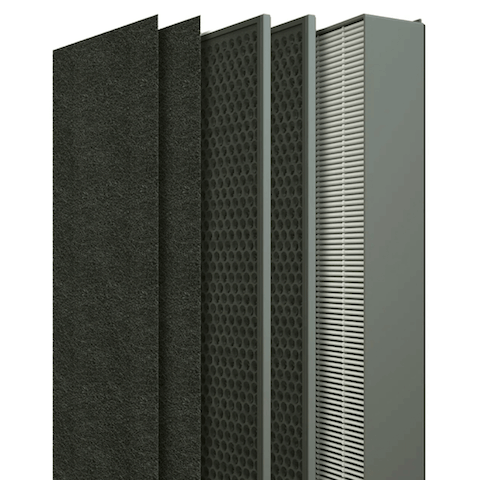
That’s why I believe Intellipure products are a step above the rest and are the best air purifiers on the market. Those of us at HomeCleanse stand by them every day!
Intellipure’s air purifiers utilize their patented DFS technology to remove up to 99.99% of particles as small as 0.0007 microns. That’s better than the EPA’s qualifications for HEPA filters, which only have to remove 99.97% of airborne particles that are as small as 0.3 microns.⁸ And, Intellipure’s purifiers do this all of the time, not some of the time. That distinction is crucial for your air quality because only removing small particles sometimes means the rest that weren’t filtered out are being pushed right back into the indoor environment. Not exactly the air quality investment we’re looking for…
Pretty amazing, right? Intellipure's air purifiers ensure those airborne bacteria, virus, and mold particles are removed so that you and your family can have peace of mind that you’re breathing clean air. As an added bonus, removing these particles also helps remove harmful gases and yucky odors and they neutralize contaminants and prevent them from growing within the filter. It’s a win-win-win!
To certify that every purifier operates correctly and does indeed meet Intellipure’s high standards, they test every single unit before it leaves their facility.
The only thing left to consider is which of their air purifiers fits your air quality needs.
Choosing the Right Fit
All of Intellipure’s air purifiers use their patented technology, so the thing to ponder is which one fits the air purification job demands you have and which one fits the budget. No two situations are the same, but the end result should always be cleaner and healthier air.
Intellipure’s Compact Air Purifier
The key distinction for this air purifier is that it’s good for areas 500 sq ft and below. So, if you’re looking to purify the air in your home room by room, work in an office and want to make sure that the indoor air is clean, or want an extra layer of protection while you sleep, this is a great option. Think of it like your clean air sidekick.
It’s also on the lower end of the cost spectrum! If you’re doing what you can when you can to handle an issue like an existing mold problem (which is absolutely okay because every little step counts), this can be helpful to mitigate exposure as much as possible when you’re inside of your home.
A few extra key points for this awesome machine are:
- There’s an option to mount it on the wall (that’s just awesome).
- It’s lightweight, so you can move it anywhere at any time.
- Changing the filter is a quick and easy process.
- It’s built slim and compactly, so it fits pretty much anywhere.
Intellipure’s Ultrafine Whole House Air Cleaner
This purifier helps remove contaminants from the air for the entire home. Let’s call this one the ultimate air cleaning warrior. It’s installed at the home’s point of entry and pushes out fresh, clean air to every vent within the building. In a perfect world, every single home would have one of these air purifiers installed to help promote cleaner air throughout the entire space. That way, the air is continuously filtered to remove any and all tiny airborne contaminants.
Those who have preexisting conditions, mold sensitivities, developing or compromised immune systems, and major allergies are at the top of the list of individuals that would benefit most from this system. It’s also worth noting again that the more mold spores that are removed from a home, the less chance that they’ll get lucky and stumble upon a habitable environment.
This purifier is a bit pricier, but it’s absolutely worth the investment. If it's not in the budget at this exact moment, that's okay! Consider starting an air purifier savings jar so that you can eventually install it in your home.
Extra bonus points for this air purifier are:
- There’s a lock-tight filtration seal, so all air has to pass through the filter.
- The filters can work for up to three years.
- It offers medical-grade air cleaning.
- Installation occurs outside of the furnace blower, creating a pressure drop and higher energy savings.
Intellipure 950P Commercial Air Purifier
This is a great option for medium to large indoor spaces under 3,500 sq ft. If you have a massive common area in your home or an open floor plan, this can be added to provide extra air filtration.
Our homes aren’t the only indoor environments we should look out for, though. These purifiers can be fantastic additions to common spaces, offices, lobbies, you name it. Wherever you spend a significant amount of time, it’s important to have filtration in place to help ensure the air you’re breathing is clean and safe. If you own the business, consider investing in this option and if you’re an employee, consider offering this up as an option for the business owner to create a safer work environment
Additional benefits of this purifier are:
- There’s a sleep mode, so you can "set and forget."
- It’s portable, so you can move it wherever and whenever.
- Changing the filter is a quick, easy, and painless process.
- It has low energy consumption.
Creating A Safe Indoor Environment
At the end of the day, the most important thing is that your air is clean and free from as many tiny particles as possible. Our bodies are absolutely amazing, but they’re not impenetrable. Sometimes, they require a little bit of extra effort for optimal performance, like eating healthy, being active, and breathing clean air. Things like poor air quality can cause serious health problems, and no one should feel unwell because of their homes and indoor environments. Life’s hard enough as it is!
Nailing down the best air purifiers is the trickiest part, but once you’ve got it hammered down, you can begin your journey to healthier living. You want a machine that actually does what it says, is the best of the best, and will be your air quality warrior (aka, an Intellipure). That way, you can rest assured that every breath you take is filled with important things like oxygen and not viruses, mold spores, or bacteria. Never forget that “Health begins at home!” ™
Don’t forget that if you’re ever in doubt or aren’t sure which purifier you need, contact a local air quality expert to get their advice!
Citations:
- Environmental Protection Agency. (n.d.). Mold. EPA. Retrieved from https://www.epa.gov/mold.
- Centers for Disease Control and Prevention. Basic facts about mold and dampness. Centers for Disease Control and Prevention. Retrieved from https://www.cdc.gov/mold/faqs.htm.
- World Health Organization. (n.d.). Mycotoxins. World Health Organization. Retrieved from https://www.who.int/news-room/fact-sheets/detail/mycotoxins.
- Environmental and Occupational Health Assessment Program, & Environmental and Occupational Health Assessment Program, & Health Science Section, Mold Basics for Primary Care Clinicians (2009). Hartford, CT; Connecticut Department of Public Health. , H. S. S., Mold Basics for Primary Care Clinicians 1–10 (2009). Hartford, CT; Connecticut Department of Public Health.
- Curtis, L., Lieberman, A., Stark, M., Rea, W., & Vetter, M. (2004). Adverse health effects of indoor molds. Journal of Nutritional & Environmental Medicine, 14(3), 261-274.
- Bush, R. K., Portnoy, J. M., Saxon, A., Terr, A. I., & Wood, R. A. (2006). The medical effects of mold exposure. Journal of Allergy and Clinical Immunology, 117(2), 326-333
- Fisk, W. J., Lei-Gomez, Q., & Mendell, M. J. (2007). Meta-analyses of the associations of respiratory health effects with dampness and mold in homes. Indoor air, 17(4), 284-296.
- EPA. (n.d.). What is a HEPA filter? EPA. Retrieved November 16, 2021, from https://www.epa.gov/indoor-air-quality-iaq/what-hepa-filter-1.
- EPA. (n.d.). Health and Environmental Effects of Particulate Matter (PM). EPA. Retrieved October 8, 2021, from https://www.epa.gov/pm-pollution/health-and-environmental-effects-particulate-matter-pm.

